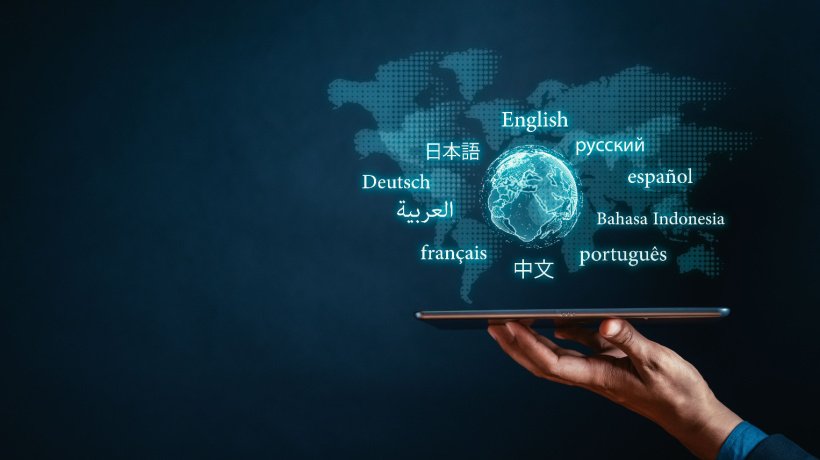The Impact Of Content Translation On Corporate Training
In the ever-evolving landscape of corporate training, the significance of effective communication is more pronounced than ever before. As businesses expand globally, the need for inclusive training programs becomes not just a goal but a necessity. This article explores the profound significance of translating content in training programs, shedding light on how language adaptation can contribute to more effective and inclusive corporate training.
Translating Content For Inclusive Corporate Training
1. Globalization And Diversity In The Workplace
In the 21st century, businesses are not just expanding; they are morphing into global entities. Diverse teams from various corners of the world bring unique perspectives and strengths. However, with this diversity comes the challenge of ensuring that everyone can actively participate in training programs. English might be the lingua franca of the business world, but not everyone is proficient in it. Translating content ensures that training materials are accessible to employees with varying language backgrounds, fostering a more inclusive learning environment that truly mirrors the diversity within the organization.
2. Breaking Language Barriers
One of the primary hurdles to effective corporate training is language disparity among employees. Not every member of the workforce is a native English speaker, and even those who are might not be fully comfortable with technical or industry-specific terminology. Translating content into multiple languages becomes an imperative step to breaking down these language barriers, allowing employees to not only understand but also engage more actively in the learning process. It transforms training from a potential source of frustration to an opportunity for growth for every individual, regardless of their linguistic background.
3. Enhanced Learning Retention
The science of learning suggests that individuals retain information best when it is presented in their native language. Translating content into the native languages of employees ensures that the information is not just understood but retained more effectively. When training materials are presented in a language familiar to the learner, it reduces cognitive load, making the learning experience smoother and more enjoyable. This, in turn, increases the chances of long-term retention, ultimately leading to a more skilled and knowledgeable workforce that can confidently apply what they've learned in real-world scenarios.
4. Cultural Sensitivity And Understanding
Training programs are not just about imparting information; they are about shaping the culture and values of an organization. They often include cultural nuances, workplace etiquette, and specific examples that might not translate well across different languages. By incorporating language adaptation, organizations can tailor content to be culturally sensitive and relevant to diverse audiences. This approach not only promotes a deeper understanding of the material but also fosters a sense of inclusivity and respect for different cultures within the workplace. It transforms training from a standardized process to a personalized journey, acknowledging and celebrating the richness of cultural diversity.
5. Meeting Legal And Compliance Requirements
In many industries, compliance training is not a choice; it's a legal obligation. Regulatory requirements may stipulate that training materials be provided in multiple languages to ensure that all employees can fully comprehend and adhere to the regulations. Translating content becomes a crucial step in meeting these regulatory demands, avoiding legal complications, and creating a more compliant and responsible corporate environment. It goes beyond a mere tick-box exercise and becomes an integral part of corporate governance, ensuring that every employee is on the same page, regardless of their linguistic background.
6. Cost-Effective Training Programs
While the initial investment in translating content may seem significant, the long-term benefits far outweigh the costs. Retraining employees due to misunderstandings or errors resulting from language barriers can be far more expensive in terms of time, resources, and productivity losses. Additionally, a well-trained and diverse workforce is more adept at handling global business challenges, contributing to overall business success. The upfront investment becomes a strategic move that pays dividends in terms of a more skilled, adaptable, and collaborative workforce that can navigate the complexities of a globalized business landscape.
7. Employee Engagement And Motivation
Engagement is not just a buzzword; it's the key to the success of any training program. When employees can fully comprehend the content presented to them, they are more likely to engage actively in the learning process. Motivated employees are not only more productive but also contribute positively to the workplace culture. Translating content ensures that employees feel included, valued, and motivated to participate in their own professional development. It transforms training sessions from a mandatory chore to an empowering experience, where employees feel a sense of ownership over their growth and development.
8. Adapting To Technological Advances
As technology continues to advance at an unprecedented pace, organizations need to stay ahead of the curve. Leveraging Artificial Intelligence and Machine Learning to automate the translation process becomes a strategic move. This not only makes the translation process faster but also more accurate. It allows for real-time updates and modifications to training materials, ensuring that the content remains relevant in a rapidly changing business environment. The adaptation of technology to enhance language translation is not just a convenience; it's a necessity in the digital age, where agility and responsiveness are key to survival.
Conclusion
In conclusion, the translation of content in training programs is not merely a convenience but a strategic necessity for organizations operating in a globalized world. By breaking language barriers, enhancing learning retention, promoting cultural sensitivity, and meeting legal requirements, language adaptation contributes significantly to the effectiveness and inclusivity of corporate training. As businesses strive for success in diverse and dynamic markets, embracing the power of translation is not just a choice but a competitive advantage. It's time to bridge the boundaries, going beyond mere tolerance to celebrating linguistic and cultural diversity, and unlock the full potential of a globally trained workforce.

